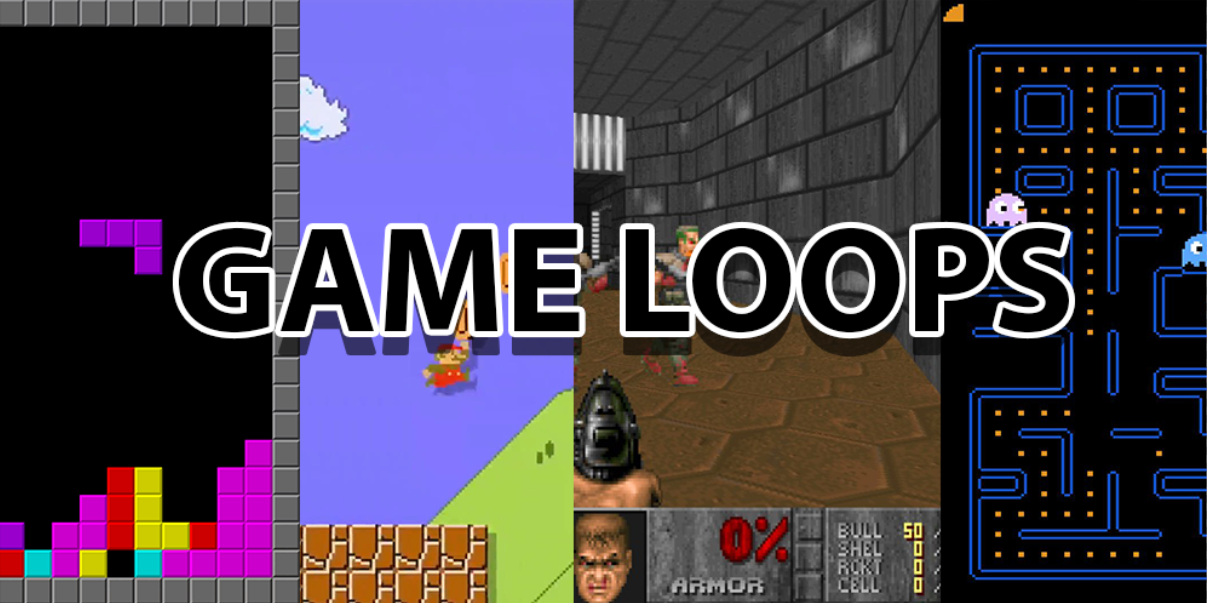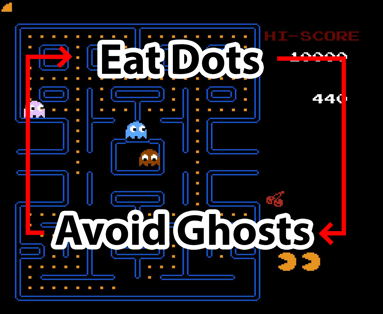
A considerable amount of work goes into developing a game. Artists paint beautiful worlds, writers craft elaborate stories, and programmers construct complex game mechanics, but none of these by themselves make a game ‘good’. All of those things will contribute to a game’s overall quality, but above all else, you’ll need to create a good gameplay loop.
Creating an engaging gameplay loop is the most important part of developing your game, so it’s important to understand exactly what that means. The primary gameplay loop of your game will be what happens in the game every second as you play. For example, in Pac-man, on a second-to-second basis you will be avoiding ghosts and eating pills. In a game like Doom, your core loop is to run around and shoot demons. This loop is the most important to get right. Game developers spend a lot of time focusing on just this second to second experience because it’s what will comprise most of the player’s experience in the game.

So once you’ve got a solid core game loop, it’s time to focus on the secondary and tertiary loops. These are gameplay loops from a wider perspective. The secondary loop is generally what’s happening minute to minute, things like completing levels in Pac-man, or clearing and advancing stages in Doom. Even further out, the tertiary loop is about the overall gameplay over longer stretches of time; think hour to hour. This is things like getting a high score, beating all the stages of a game, unlocking items, or progressing on a larger scale. It’s important to have these outer loops as well to ensure that the core loop stays interesting for longer than just a few minutes. You enjoy playing for the primary loop, but you continue playing for the secondary and tertiary loops.
To get a more solid understanding of what makes a good gameplay loop, you can usually analyze your favorite games and pinpoint their primary, secondary, and tertiary loops. My favorite game is Tetris, so the primary loop of Tetris is to move and rotate the falling blocks and try to clear lines to avoid the blocks getting to the top and getting a game over. This primary loop is very fun in its own regard, but what really makes it interesting is the secondary loop where the more lines you clear, the faster the blocks fall. This makes you want to try to survive as long as you can. What really brings it all together is the tertiary loop: achieving high scores. Tetris has been around since 1984 and still continues to engage players because you can always keep playing to trying to push your score higher. This is what makes the very simple primary loop of moving blocks and clearing lines far more engaging and brings significantly more depth to the overall game.
So that’s game loops in a nutshell! Definitely take this information and use it to your advantage during your own game development; a strong core loop will make your game so much better. This stuff is some of the primary principles of game development and is a lot of what we practice and perfect while developing games at UAT. To learn more check out our Game Design degree!





Comment